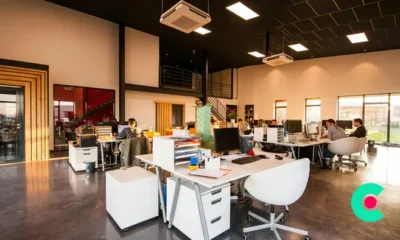Archives
#Seattle and #Bangalore: an Early Comparison of #Startup Cities

I spent a good few weeks in Seattle meeting entrepreneurs, investors (VC’s and a few angels) and visiting local accelerators.
While, still early, I formed some opinions based on my interactions and impressions. I initially thought I’d make a very comprehensive post on the pros and cons of both cities, their entrepreneurial talent, their support for startups and their investor biases. I felt though, that I had not given myself enough time to understand the Seattle area, so I will look at the two startup hubs more objectively in this post.
My impression though right now is that Bangalore is WAY ahead in all metrics and by a wide margin.
I am not comparing the Indian ecosystem to the NorthWest, just Seattle to Bangalore.
There are 7 categories of data points I want to highlight.
1. Events, meetups, support groups and inclusiveness of entrepreneurs. Support for entrepreneurial success stories with startup media will also feature in this category.
2. Support for early stage (seed) funding with angel investors and accelerators
3. Ability for entrepreneurs to attract talent to their ventures – both availability of talent and their willingness to join early stage ventures, access to good local universities who can keep providing great talent for startups
4. Growth support with Venture capital
5. Availability of mentors – entrepreneurs who have been there, done that and later stage company CEO’s who can guide new entrepreneurs
6. Early adopters – small businesses, consumers and larger businesses who are willing to try and then pay for new products
7. The X-factor – things that attract smart folks to be here – quality of life, infrastructure, food options, night life, commute, weather, etc.
1. Events & Meetups. It is no secret that I attend many events. Most on the weekends – Hackathons, meetups, technical review sessions, show and tells. Anything that’s remotely entrepreneurial attracts my attention. From Design Day (hosted at the Accelerator) to Construkt and from NASSCOM Product conclave to The Fifth Elephant. I love meeting entrepreneurs and learning about technology of all forms.
In this area, Bangalore is way ahead by a mile, primarily because of the grassroots efforts by some . I am very impressed with Kiran Jonnalagadda and the Has Geek, Shubhendu and VentureSity, Prashant and the folks at Startup Saturday and the multiple daily events for startup entrepreneurs.
The Seattle ecosystem has its share of events, most are technical as well, with visiting folks from the Bay area and other locations meeting every week and many adhoc meetups for entrepreneurs both on the east side of Lake Washington and the West side (Seattle city).
Bangalore though, has over 54 hackathons each year and the Seattle area has fewer than 30. Seattle has Startup Weekend though, which does a great job locally. Bangalore just has way too many entities helping organize Hackathons.
Startup press in Bangalore used to be dominated by online publications like YourStory and Pluggd.In, but I see the Economic Times, Times of India, Business Standard, Live Mint and Financial Express increasingly doing at least 2-3 stories daily on startups.
Seattle has Geek Wire and a few local publications, but the number aside, (which would be less than 1/2 the total blogs and press in Bangalore), the ecosystem at the earliest stages is just small.
Since Seattle has a population of about 3.5 Million people, compared to 8.5 Million in Bangalore, it is expected to be much smaller. If you look at the technical talent, Seattle has around 500,000 folks in the tech area, compared to close to 1 – 1.5 Million in Bangalore.
2. Early stage funding. Talk to any entrepreneur in Seattle (I met with over 30 in 2 events) and the familiar concern you hear is – there are too few risk-takers, few early stage investors willing to fund pre-revenue companies and a dearth of high net worth investors in tech.
That’s the same story you hear in Bangalore as well, but there’s a huge difference. I am sure the entrepreneurs in Bangalore dont realize how good they have it here, until they look at other ecosystems (the familiar comparison is to Silicon Valley).
It is very surprising to hear that Seattle has few risk takers, since over 50,000 millionaires are in the Seattle area – ex-employees of Microsoft, Amazon, Isilon, F5 networks, Expedia, Starbucks, and others. The only challenge is that most of them are fairly conservative and have stayed away from investments in early stage startups.
Bangalore has about 10,000 $ millionaires in contrast from Infosys, Wipro, etc., but many more from old school businesses. They tend to be largely conservative as well.
If you look at the angel groups, Indian Angel Network and Bangalore Angels, although folks that move slowly and demand a lot of entrepreneurs, both in terms of milestones and % of the company, they do get deals done, and dont charge entrepreneurs to pitch their ideas.
In contrast of the 11 angel groups in Seattle, 8 of them seek payments between $200 to $800 to pitch, with no guarantees of funding.
The interesting thing is that having been in a few funding presentations at Bangalore, I get a sense that folks are interested in funding companies, but in Seattle I got a sense (from the 1 meeting that I attended, so take it with a grain of salt), that there was lots of skepticism.
The accelerator scene is pretty comparable. We have the Microsoft Accelerator, Kyron and the Target accelerators in Bangalore, and the Bootstrap center (J P Nagar) as well helps entrepreneurs. I went to 2 accelerators of the 3 in Seattle – TechStars Seattle, 9 Mile Labs and Eastside Accelerator.
I would still (I am biased) rate the type and maturity of entrepreneurs in Bangalore that come to the accelerator as higher than those in Seattle. I should do a more detailed fact based, data driven comparison on this later.
Finally the co-working space in Seattle run by We Work is awesome. I loved the space and its location is excellent. It is fairly central in the city and has easy access to investors, media and other potential partners as well.
Comparably The NASSCOM Warehouse with its one location is smaller and less fancy, but it has currently more startups than WeWork in Seattle. I know that the NASSCOM 10K program is looking to expand with another accelerator, and that will place Bangalore further ahead again.
3. Type and accessibility to talent. The talent pool in both places is fairly good, but both have their own challenges. Similar to Bangalore, most folks prefer to work for Amazon or Microsoft and any number of larger companies in Seattle and value their work-life balance.
Of the 17 entrepreneurs I spoke with, most of them claimed that getting talent from places outside Seattle was impossible, but I know most Bangalore entrepreneurs can easily attract great talent from Delhi, Mumbai and other cities in India.
In terms of educational institutions, the largest University in the Seattle area (UW – or Univ of Washington, uDub) is a hotbed of some great research in the areas of IoT, big data and other nano technologies. Bangalore does have IISc, IIM Bangalore and many (over 50) local great engineering colleges, but entrepreneurs still have a hard time recruiting talent for startups.
4. Venture Capital Scene: I had a chance to meet folks from Voyager Capital, Madrona and Silicon Valley Bank. Ingnition is another well known local venture capital firm in Seattle. The investors were smart, very plugged in and very keen to get Seattle up and running among top startup capitals in the world.
Local to Bangalore, I rate Sequoia, Accel, Kalaari and Helion higher than their Seattle counterparts. I know there are more VC’s in Bangalore including Nexus, SeedFund and Inventus, but they have a larger presence in other cities where most of their partners are.
The investor community in Bangalore is a lot more accessible, and frequently is spotted at events, looking to meet and learn from entrepreneurs. Seattle entrepreneurs love their VC’s as well, but they have smaller teams for sure, so meeting them is rare and most likely in panels at local events.
5. Availability of Mentors: There are between 10-25 names of entrepreneurs and founders whose names kept popping up at my meetings in Seattle and the number of “well known” mentors and startup founders were the usual suspects after my 5th meeting. Local favorites include ICanHazCheeseBurger, SeoMOZ, Apptio and others.
The mentors (as expected) are very widely sought after and have very little time as well. They are mostly the role models for entrepreneurs in Seattle and so they are held in reasonable reverence.
In Bangalore as well, you will get the same 25-30 names, including folks a Flipkart, InMobi, and other successful entrepreneurs, but the depth here of the ecosystem and the diversity of activity is larger is my sense.
There is large abuse of the advisory relationship and there are many “fake” mentors, but there are enough awesome folks like Ravi Gururaj, Sharad Sharma, Sanjay Anandram and others who are willing and able to help.
6. Early Adopters. I did not have enough time to observe the consumer part of the early adopters, but I think both ecosystems need a lot of work in this area. While most Seattle folks have a smartphone and they probably adopt new technology sooner than Bangalore folks, I think the very early adopters in both communities are limited and far-and-few between.
7. X Factor elements: This is a tough one. Lets peel the layers a little. I am sure I will miss a few categories, but lets try anyway.
1. Climate: Bangalore wins by a wide margin. Except for 3 months of the year, it is sunny, cool and wonderful. Except for 3 months of the year Seattle is raining all the time.
2. Food, Nightlife and Entertainment: Cant say. I dont know actually. I am not a big Nightlife kind of person, so I could not say. Suffice to say that local attractions in Seattle are a LOT better than Bangalore. With its many parks, hiking trails, lakes, etc. it is an outdoor person’s paradise.
Bangalore has limited options for world cuisine compared to Seattle for sure. There are better attractions in the city of Seattle as well, with a great football club, a good basketball club and a decent soccer team. Bangalore has Royal Challengers and that’s pretty much it.
3. Infrastructure: Commutes are shorter in Seattle, Options for public transport are better and quality of life for most people is better than Bangalore. But the biggest challenge is Seattle is competing with Silicon Valley and New York / Boston and Bangalore competes with Delhi and Mumbai. Seattle cannot compete as well, but Bangalore is a much better attraction for folks who are not from this region.
So, there you have it. Comparing the two cities, I can confidently say the startup scene in Bangalore is at least 2-3 years ahead of Seattle.
Look at it another way: I believe Bangalore is about 10 years behind Silicon Valley (at the minimum) and Seattle is about 12-13 years behind, so practically speaking, we should not be comparing the two cities at all, because they are both way behind the leader by a wide margin.
I just wanted to do it because I got many questions from entrepreneurs from both locations wanting to know which city is further ahead.
Archives
How “Clustering Illusion” Stalls More #startups Than Any Other Bias

When you are doing your initial customer development, by talking to many potential users, there are many cognitive biases you need to be aware of.
Cognitive biases are tendencies to think in certain ways that can lead to systematic deviations from a standard of rationality or good judgment.
Usually most founders tend to solve problems they have exposure to or those they are aware of, or those they believe to be one that’s a large market. This stems from the “scratch your own itch” phenomenon.
I had a conversation with a founder who is building a consumer internet company, where viral effects of her product determine the growth trajectory more than any other metric. Or so, she had learned from many other founders experiences – both by talking to them and investors in the space.
After 3 months of building her mobile eCommerce product, she and her cofounder launched it in the marketplace. Initial traction was good and trending ahead of their expectations. Many of the early users were impressed with their product selection and merchandise.
Growth after the 4th month though, stalled as they were on the road trying to raise their initial funding. Most every entrepreneur knows that fund raising can be a full time job. In fact I have mentioned several times that fundraising is a poker game more than chess.
When they were trying to show their initial user growth, many investors had the same problem – was their product a trendy, 3-month-uptick or a sustainable-fast-growth business?
After hearing this from the 5th seed investor, they determined that they need to look closer at their numbers, their repeat purchase behavior and address the issue before they were going to raise any funding.
Looking at the initial numbers suggested their they had many buyers who got to know about them through word-of-mouth, and the repeat purchase was high.
She and her cofounder determined that they had to improve their virality coefficient.
This is the bias I see most often: clustering illusion.
The clustering illusion is the tendency to erroneously consider the inevitable “streaks” or “clusters” arising in small samples from random distributions to be statistically significant.
When you have very little data, you have very little data. That’s it.
Don’t make assumptions about the overall market based on very little data.
There are times when you have 60% of the data and you have to make a decision. There are times when you have 30% data and you have to make a decision.
The difference between 30% and 60% is a lot. In fact, most entrepreneurs I deal with confuse having 3% of data with 30% of data.
To reduce clustering illusion the only remedy is to get more data. You will have to run more, smaller, experiments, over smaller periods of time and do it consistently. Make your assumptions, document your hypothesis, but continue to work on getting more data.
Turns out the real problem for our entrepreneur was that the overall market was much smaller, and they found it after 1 year of trying to increase their virality coefficient. They did raise their initial funding, but have since pivoted to expand their merchandise offerings to cater to a larger market.
Archives
How to name your SaaS pricing plans? A primer from 89 examples

There are over 7500 SaaS companies according to angel List. Over the last few weeks I had a chance to review 89 of the companies to understand their free to paid conversion and also a chance to talk to 13 companies. What I learned was that time spent on the pricing page was a key indicator of conversion and you can A/B test your pricing page for colors, position of your highest and lowest prices, number of plans showed, feature listing and your call to action.
I did notice that of the 89 companies, 82 of them gave their pricing plans “names”. Each plan had a name so their customers could associate the name with the plan. Most (over 80%) used standard and conventional names but it was interesting to see the spread. Here is the data from 89 companies and 251 plans.

The most important points you want to take away are the following:
1. Even though SMB and SOHO (Small Office, Home Office) users are the first few to sign up for a SaaS service, 3 of the top 5 names were named Enterprise and Business and Large. I would imagine this has to do more with the inside out naming (the plan is large or enterprise, not the company buying it).
2. The plans named “Small or equivalent” were largely in the bottom quartile of the distribution. Even though over 70% of companies had 3 plans, only 35% of them named the smallest plan as “Startup”, “Starter” or “Lite”. The most common starting plan was named “Standard”.
3. Of the 20% of companies that used “custom” names like Boutique, Tyrannosaurs, or Garden named all their plans uniquely. The surprising element of the companies that used custom names was that most of them had images to convey the “size” of the plan.
There were some other surprising things I learned as well in my discussions.
1. In naming plans, understanding the end customer’s billing and invoicing was key. Most customers got an email invoice (a few sent PDF invoices) and they would either file them or expense those invoices (if < $50) or would send the invoices to an accounting team.
Ensuring that the “accounting” team did not ask any questions was the consistent mention among 3 of the startups with custom names for plans.
2. Naming the plans to support your payment gateway is also critical. Getting too cute with names means the payment gateway will support a higher refund request that were marginal.
3. Many of the companies had to setup standard names so their marketing and product management teams could do better analytics and research on the backend, consistent with their reporting. Surprisingly, if the names were “standard” the companies found it easier to have a conversation to understand conversion rates, pricing options and changes with their finance teams, design teams and other outsourced companies as well.
Archives
Creating Artificial Constraints as a Means to Innovation

Many of the entrepreneurs I know have created new innovative startups thanks to real constraints they had. For example, I was hearing AirBnB’s Brian Chesky, on the Corner Office podcast and he mentioned that when he and his cofounder were trying to get some money to get started and the only way to keep afloat was to “rent” their air bed they had in their room. That, then led to Air Bed and Breakfast, which is now AirBnB.
This was a real constraint they had – no money to “eat” so they had to make it happen somehow.
I have heard of many stories of innovation where in the protagonists had real constraints of either financial, technology, supply, demand, economic, social or any number of other characteristics.
The interesting story that I have also recently heard of how Facebook has “pivoted” from being a desktop offering to getting a significant part of their revenue from mobile is how they were given the arbitrary constraint of only accessing Facebook via the mobile phone.
So there are ways that you can create “artificial” constraints to force innovation to happen.
Most larger companies and some smaller ones as well, have to constantly find ways to create artificial constraints – to find a way to innovate and be more be a pioneer.
While some constraints are good – lack of funds at the early stage for example and lack of resources, there are entrepreneurs that are stymied by these constraints and those that will find a way to seek a path to go forward.
I think this is a great way for you to think about innovating in a new space. If you have constraints, find a way to use it to your advantage.
-

 Business2 days ago
Business2 days agoWhat I Learned in My First Month of Running a Startup Accelerator
-

 Business3 weeks ago
Business3 weeks ago5 Profitable Digital Business Ideas, Increase Your Income!
-

 Archives3 months ago
Archives3 months agoHow Can You Tell If An Angel Investor Is “real” Or “fake”?
-

 Business1 month ago
Business1 month agoIndividually Proficient, Collectively Efficient; Why Your First Hire Matters
-

 Business3 hours ago
Business3 hours ago6 Affordable Co Working Space around the Globe
-

 Business3 hours ago
Business3 hours ago6 How to Make a Business Presentation More Relatable
-

 Politics1 month ago
Politics1 month agoPrediction of Global Economy in 2024, Indonesia The First ASEAN Country Most Confident to Create This Program
-

 Archives1 month ago
Archives1 month agoHow Accelerators Make Money To Manage Operating Costs
